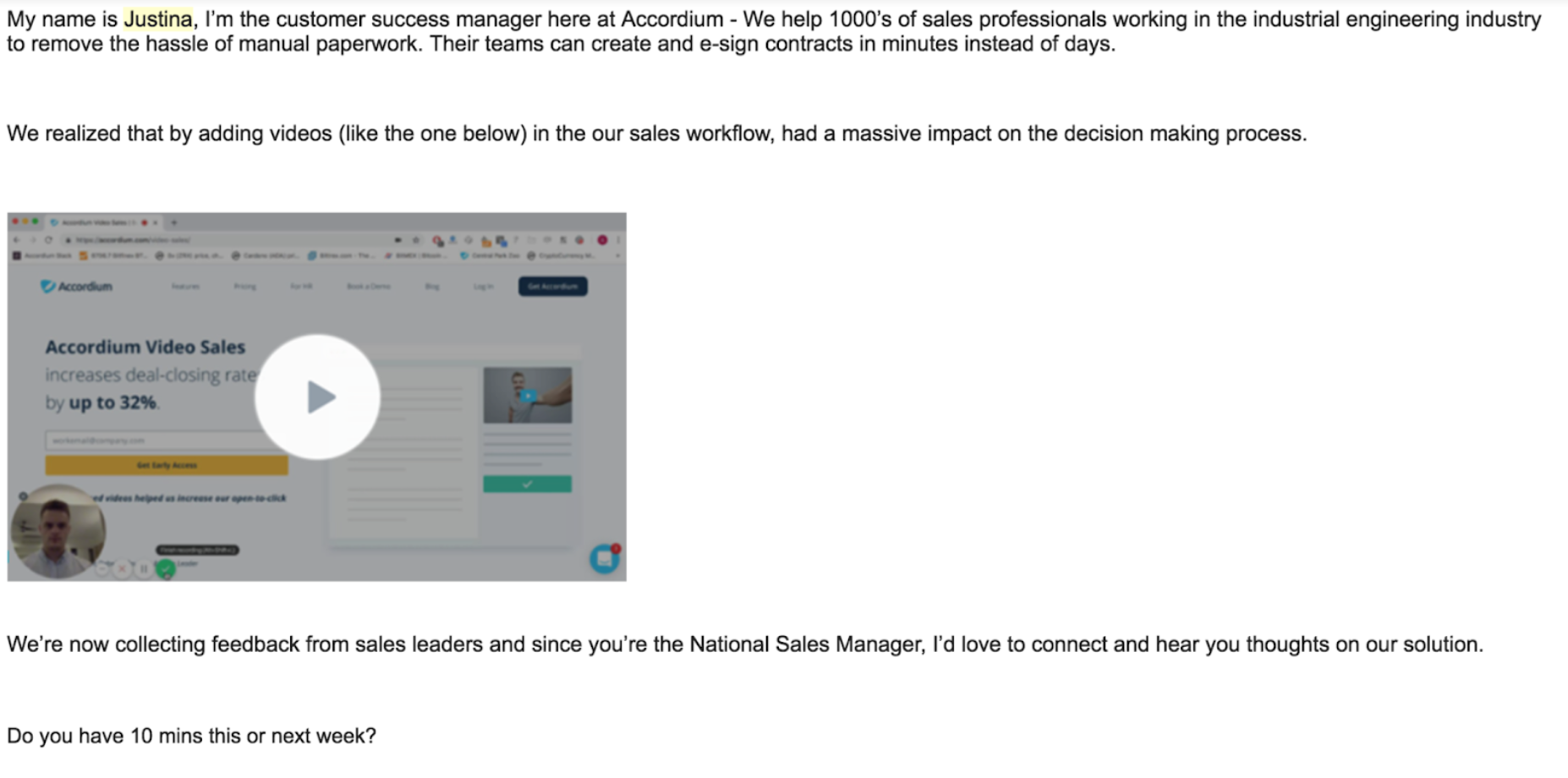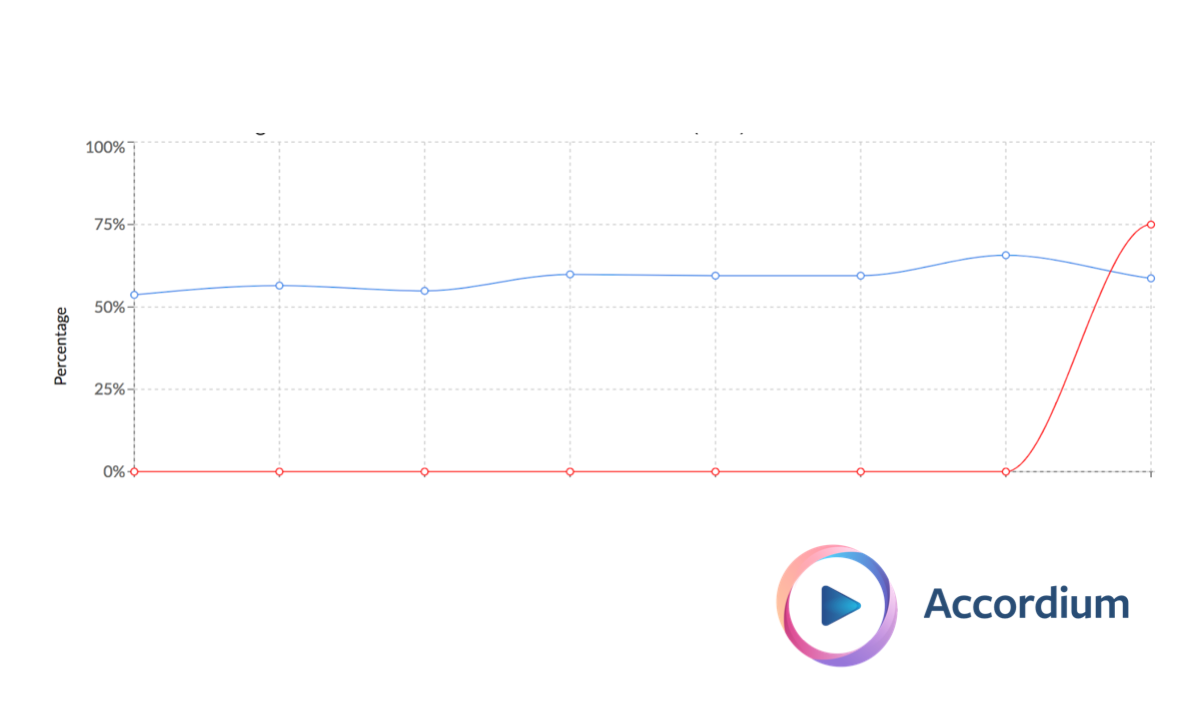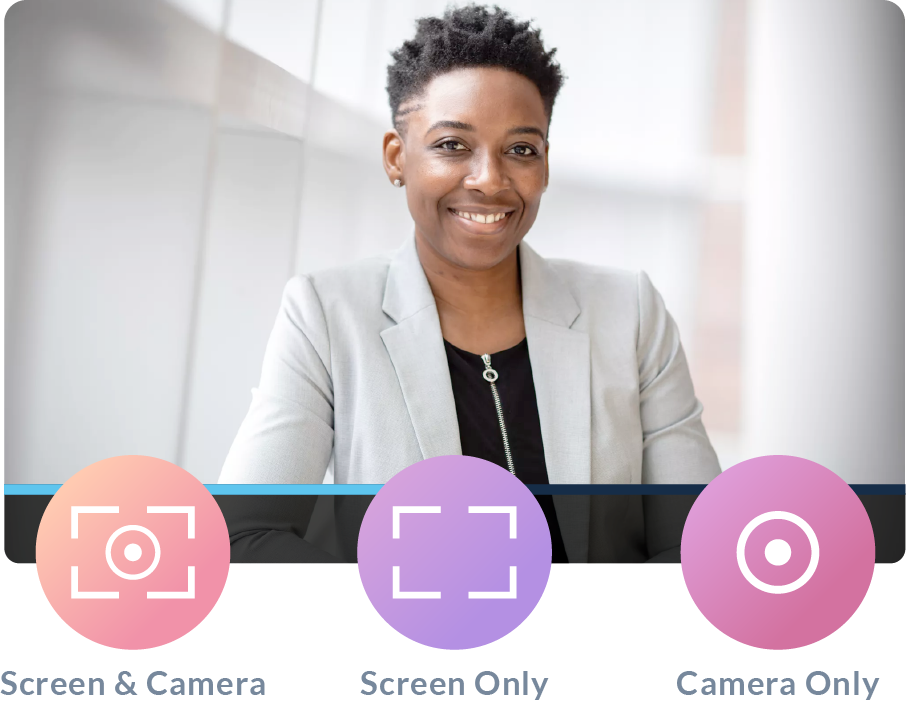If you’re managing a B2B sales floor then conversion rates are the bread and butter of your success. With suppliers increasing year-after-year, more solutions appearing, competition getting tougher and the products on the market looking more and more similar, understanding how to optimise the buying rate is critical.
Before Accordium Engage came to life, we experimented with our own sales processes because we wanted to understand precisely how we could impact the sales funnel in the most positive way.
As a company striving for growth on a low budget, we had to be explore methods for the individual salesperson to amplify their productivity. To begin with, we looked at the usual suspects to increase number of leads: Google, Facebook and different kind of ads.
We quickly became aware that these traffic bringing ads are very expensive and ineffective but more than that, they were hard to tailor to our exact audience.
Furthermore, with all the advertising in the tech space today, it has become even harder for us providers to engage with our visitors and early-users. A ‘firewall’ is formed around online prospects after too many automated and coded messages has impaired their sensitivity, and left them hardened.
Think about how many intercom messages you see, or how many newsletters you receive. How many do you actually respond to or interact with? Not many is my guess, I certainly don’t. We therefore knew our approach had to be different. Fighting on the same battlefield as the competition left us in no better condition than them to win.
We decided to start experimenting with personalized videos in different areas of our sales funnel to measure if we could imitate the person to person feeling, in an automated way.
Let’s take a look at the three common stages of the sales funnel and the video techniques we used to optimise each step.
1) Implement personalized videos in direct email campaigns
We began our experiment at the top of the sales funnel with our most effective lead-generator: Direct email campaigns.
Because no system (at least to my knowledge) lets you to embed videos into email sequences, we had to do a hacked version through a combination of Google Drive and screenshotting, to see if the responses would increase.
The email template ended up looking like this:

After a combined testing pool of more than 1000 accounts, we learned that embedding videos into our email templates had an incredible effect on the ROI, continuously winning against our previous samples without embedded videos:
- Close to 70% increase in direct response rates
- More than 100% increase of positive response rates
- 25% decrease in negative response
We started receiving responses from our prospects telling us how refreshing this personalized approach was, and they’d be happy to give us a chance.
Even though the recorded video was templated and reused across many leads, the prospect perceived it as being made directly for them. At the same they get to see your face, familiarize themselves with you and therefore immediately get the feeling that they have a relationship with you; before you ever engaged.
Below you can see how the template ‘video_sales’ consistently outperforms the text based templates.

2) Implement personalized videos into our proposals
In lieu of the stated goal of improving conversion rates in the sales funnel, we also tested how well we can improve our proposal approval ratio. This was a more critical step to take because the acceptance of our proposals have direct impact on our revenue, and obviously it is here we want to excel.
Why was it important for us to test the impact here? Well, we know that when it comes to making a decision, buyers usually have two or three different suppliers in mind. Their decision making criteria is based on features, price, service et al, but also on personal feeling.
Business decisions are made on personal instinct and whether the buyer likes the seller, more than you’d think. That’s why building rapport is critical in the selling phase, and why it’s a skill you must master.
By implementing personalized sales videos in the proposal stage, we’ve created a continuum of personalized interactions from the very first touchpoint (the email, example above). This helps to create a sensation where the buyer feels a personal connection with the seller, and you are no longer just text in an e-mail or a voice on the phone.
Implementing videos in our sales proposals, we not only saw an increase in overall conversion rate, we started to see other data improve too. For example, the interaction (open/click) rates increased a lot, helping us get our faces in front of the buyer at a higher rate (compared to not getting any view at all). See below:
Invitation Click-Through-Rates for Video and Non-Video Contracts (%)

With such a dramatic increase in Click-Through Rate, the hypothesis was that we’d automatically improve our sales by the same margin; however, the unknown factor i.e. the video itself was not counted within this hypothesis.
After reviewing the funnel and measuring the qualitative impact of the video itself, we recorded a 32% increase in overall proposal approval.
3) Implement personalized videos into the final contracts
The last step in the sales funnel we decided to test, was the final stage; the contract stage. Like any other business, we’ve often frustratedly pressed the ‘remind’ button in Accordium seeing our recipients opening and viewing the contracts but not responding. Over time this has left to delayed and lost revenue, neither of which we are particular fans of. Continuing the personalized approach, with facetime at the final decision making step, hence made sense to us.
It reminded me of when I used to consult ecommerce businesses on how to optimize the check-out stage of their website; social proof was my number one implementation at this stage. The same thing is true in the contract stage; especially if you’ve never met the buyer face to face.
Trust is low, and with videos you are making great strives to bridge that gap; and give yourself the biggest chance of success.
This final video implementation is less about data and more about comfort for both parties. Through extensive research and by continuously having an open dialogue with our customers, we’ve learnt that personal engagement is important for a long and healthy partnership.
If you implement it from the beginning it will help strengthen the customer relationship, allow the parties to be open and honest, and provide feedback where it’s needed. This in turn ensures you that your customers will not churn at the first sight of problems, and that is invaluable if you wish to run a sustainable business
This has over time left to delayed and lost revenue, neither of which we are particular fans of. Continuing the personalized approach, with facetime at the final decision making step, made sense to us.
When I was consulting ecommerce businesses on how to optimize the check-out stage of their website, social proof was my number one implementation at this stage. The same thing is true in the contract stage; especially if you’ve never met the buyer face to face. Trust is low, and with videos you are making great strives to bridge that gap; and give yourself the biggest chance of success.




